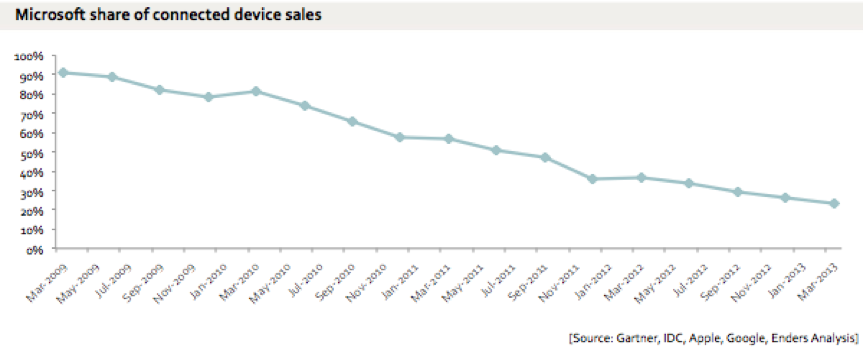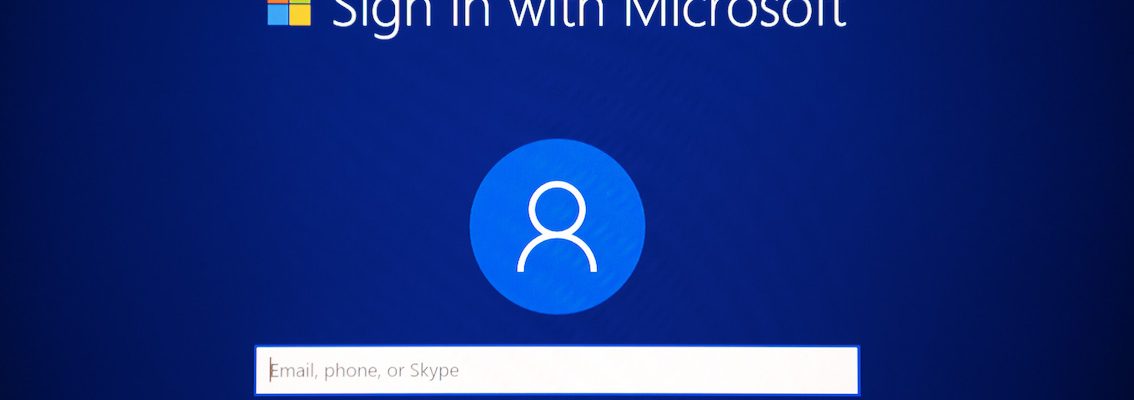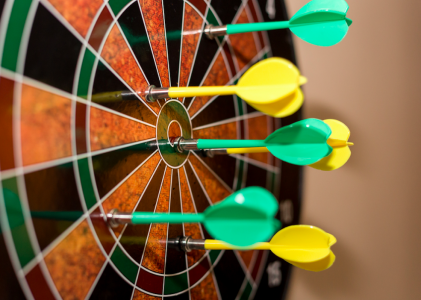On March 23rd 2016, Microsoft released a new artificial intelligence Twitter bot named Tay. “Hellooooooo world!!!” read its cutesy first message. Within hours, however, human users had persuaded Tay to replace its light hearted banter with anti-semitic, sexist, and racist Tweets. The media got hold of the story and pilloried Microsoft and its new CEO, Satya Nadella. While it probably didn’t feel like it at the time, Tay represented the start of a significant turnaround in Microsoft’s fortunes that would eventually lead the tech giant to reclaim its position as the most valuable company in the world.
Follow the Leader
Under either of its first two CEOs, Bill Gates and Steve Ballmer, Microsoft would have balked at the Tay PR disaster and axed the project for good. But Nadella, then two years into his role, wasn’t phased. After hearing about the disaster, he wrote an email to the team behind the project, saying “Keep pushing, and know that I am with you. [The] key is to keep learning and improving.”
Tay’s engineers rallied behind Nadella and created a second iteration of the bot. Zo, as they called her, made her public debut in December 2016. It’s remained friendly ever since, unaffected by mal-intentioned humans.
Nadella’s confident handling of the Tay incident, and the subsequent catapulting of Microsoft back into the tech limelight, marked a radical departure from the ways in which Microsoft’s second CEO, Steve Ballmer, had run the company.
Between 2000 and 2014, Ballmer had pursued short-term commercial improvements at Microsoft, tripling sales and doubling profits. These impressive financials, however, disguised an underlying malaise at the company. Microsoft’s share of connected device sales had plummeted from over 90% in 2009 to under 25% in 2013. Recent investments — Zune, Navision, aQuantive — had all flopped. And its $7 billion gamble on Nokia ended with a $8.6 billion writedown.

As venture capitalist Benedict Evans explains, “Microsoft survived and thrived in the PC internet era, despite appearing to be irrelevant, by milking its victory in the previous phase of the technology industry.”
Under Ballmer, Microsoft stuck to what it did well but ignored emerging technologies. When Ballmer stepped down as CEO in 2014, Apple and Samsung owned the mobile device market, Amazon dominated the cloud, and Google led the field in artificial intelligence.
When the Microsoft board started its search for Ballmer’s successor, they discovered something shocking: Nobody wanted to take over. “[N]o one in the Valley wanted a damn thing to do with Microsoft,” explained straight-talking Microsoft Chairman John Thompson. The company was stuck in a slow decline and needed radical ideas if it was going to survive, let alone thrive again. Desperate, the board turned to Satya Nadella, a long-time company engineer with little experience at heading up tech conglomerates.
The New Fresh Face of Microsoft
“[Nadella] made a pronouncement on day one — the world is about cloud first, mobile first,” said Thompson. “He never mentioned Windows one time.” AI, combined with cloud technology, was the new future of Microsoft. Just like that, Nadella pivoted a $500 billion company.
Internally, this wasn’t as radical as it sounded. Microsoft had experimented with artificial intelligence as far back as the early 1990s. Indeed, throughout much of the ‘90s and 2000s, Microsoft led the AI sector, attracting hordes of leading researchers to its labs.
There is, however, a reason why Microsoft didn’t develop its market position and emerge as the clear leader in AI. Its executives insisted its engineers work in isolation, believing that it was better to keep them insulated from disruptive market pressures to work on new features and functionality. As a result, few innovations ever made it to market. When younger, more innovative companies started to overtake Microsoft, its engineers left in droves. Indeed, many leading AI startups throughout the 2000s and 2010s were started by engineers who honed their craft at Microsoft.
Courting and Curating AI
When Nadella took over from Ballmer, he was determined to recapture Microsoft’s former glory as a leader in the AI space. His first job was recruiting Yoshua Bengio, one of the three minds who shaped the deep learning architecture that dominates modern artificial intelligence. Bengio, however, was reluctant to accept the offer. He related to the nuclear physicists of the twentieth century and believed society must be careful not to create another atomic bomb. Initially, Bengio rebuked Nadella’s offer, preferring to remain a neutral agent and continue his work from a small office at the University of Montreal.
What eventually convinced Bengio wasn’t a flashy presentation or emotive pitch, it was the rapid growth of two of Microsoft’s competitors. “We don’t want one or two companies, which I will not name, to be the only big players in town for AI,” said Bengio.
One of the companies Bengio refers to is headquartered in Menlo Park, the other in Mountain View. Both had recruited Bengio’s former colleagues and were making huge strides in AI. In January 2017, after a long courtship by Nadella, Bengio agreed to become a strategic advisor to Microsoft.
With Bengio on board, Nadella doubled down on AI, creating a fourth engineering division called the Artificial Intelligence and Research Group headed up by executive vice president Harry Shum. The new division cut across the company, intersecting all three of Microsoft’s core offerings: Windows, Office, and Azure.
In its first year, Shum recruited 5,000 talented engineers to his new group. The next year, he increased the headcount to 8,000.
“We’ve largely built what I would call wedges of competency — a great speech recognition system, a great vision and captioning system, great object recognition system,” said Eric Horvitz, who leads a sub-team within Artificial Intelligence and Research. “We’ve managed to do incredible work with those wedges.”
Applying Microsoft’s Artificial Intelligence for a Better Tomorrow
While some in the Artificial Intelligence and Research Group division are trying to pull those wedges together into an intelligent whole, most are focused on integrating them into existing products and new applications. And after years of rumblings, we’re finally starting to see the first practical applications of Microsoft’s AI in the real world.
In two Shell gas stations — one in Thailand and the other Singapore — Microsoft AI-powered cameras are constantly searching for the telltale flicker of a lit cigarette. Whenever the system’s AI picks out a smoking customer, it sounds the alarm, preventing a potentially calamitous disaster.
In another application called Project Hanover, Microsoft is using AI to help treat cancer. At the moment, it takes several hours for a board of highly trained experts to review one patient’s genomics data and make a treatment choice. Microsoft plans to accelerate that process by having its AI sift through reams of biomedical data and summarise it for the board.
But this is only the start for AI at Microsoft.
On March 29th 2018, Nadella sent an email to every single Microsoft employee, explaining his vision for the company over the next 10 years. The closing lines read: “It’s amazing what we have been able to accomplish together, and yet I still believe we are in the very early days of what is possible.”
At Microsoft’s latest Build conference, Nadella and his colleagues showed the world what his version of a Microsoft AI-enabled future could look like beyond the very early days.
In its headline exhibit, Microsoft’s AI Cortana sat in on a meeting, transcribing every last word from its attendants — regardless of language. When one of the meeting’s attendants offered to follow up with someone next week, Cortana heard and automatically added a reminder to their calendar. After the meeting, Cortana wraps everything up and emails everyone in attendance a copy of the minutes.
Build was a fraction of what Nadella could have shown attendants. Back in Microsoft’s Redmond headquarters, Shum and his colleagues flit between labs, experimenting with new AI applications. In one lab, engineers attempt streamlining the drug discovery process. In another, they’re attempting to cure ALS. Nothing, it seems, is off limits.
Microsoft More Valuable Now Than Ever
Microsoft under Nadella is like a brand new company. The people are different, the technologies are different and even the business model is different.
In his first four years, Nadella’s dedication to AI has tripled the stock price to an all-time high of $116.18 earlier this year, making Microsoft worth $800 billion. In doing so, Microsoft reclaimed its position as the most valuable company in the world.
Image Credits
Feature Image: via BigStockPhoto
Image 1: via Benedict Evans



